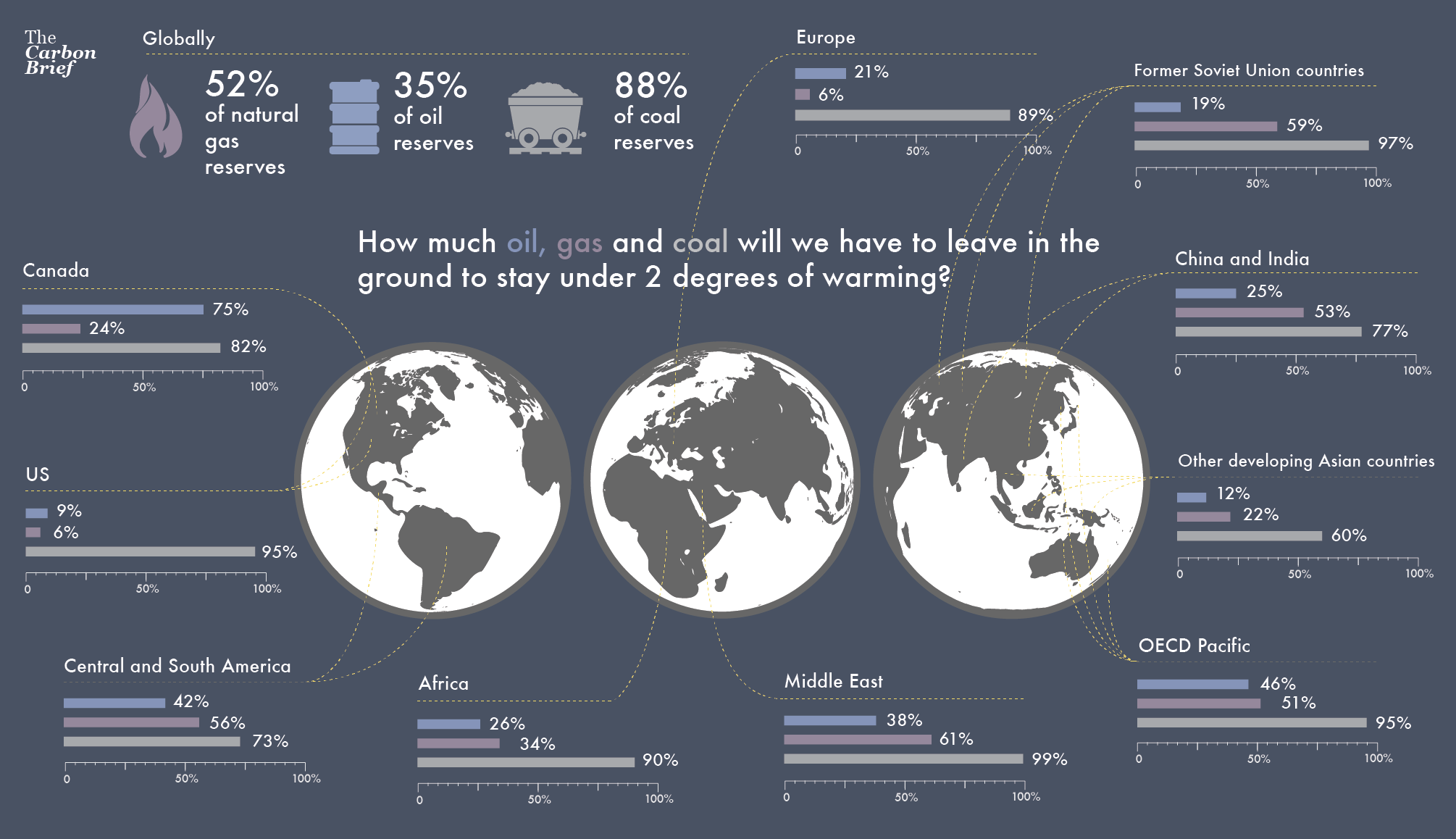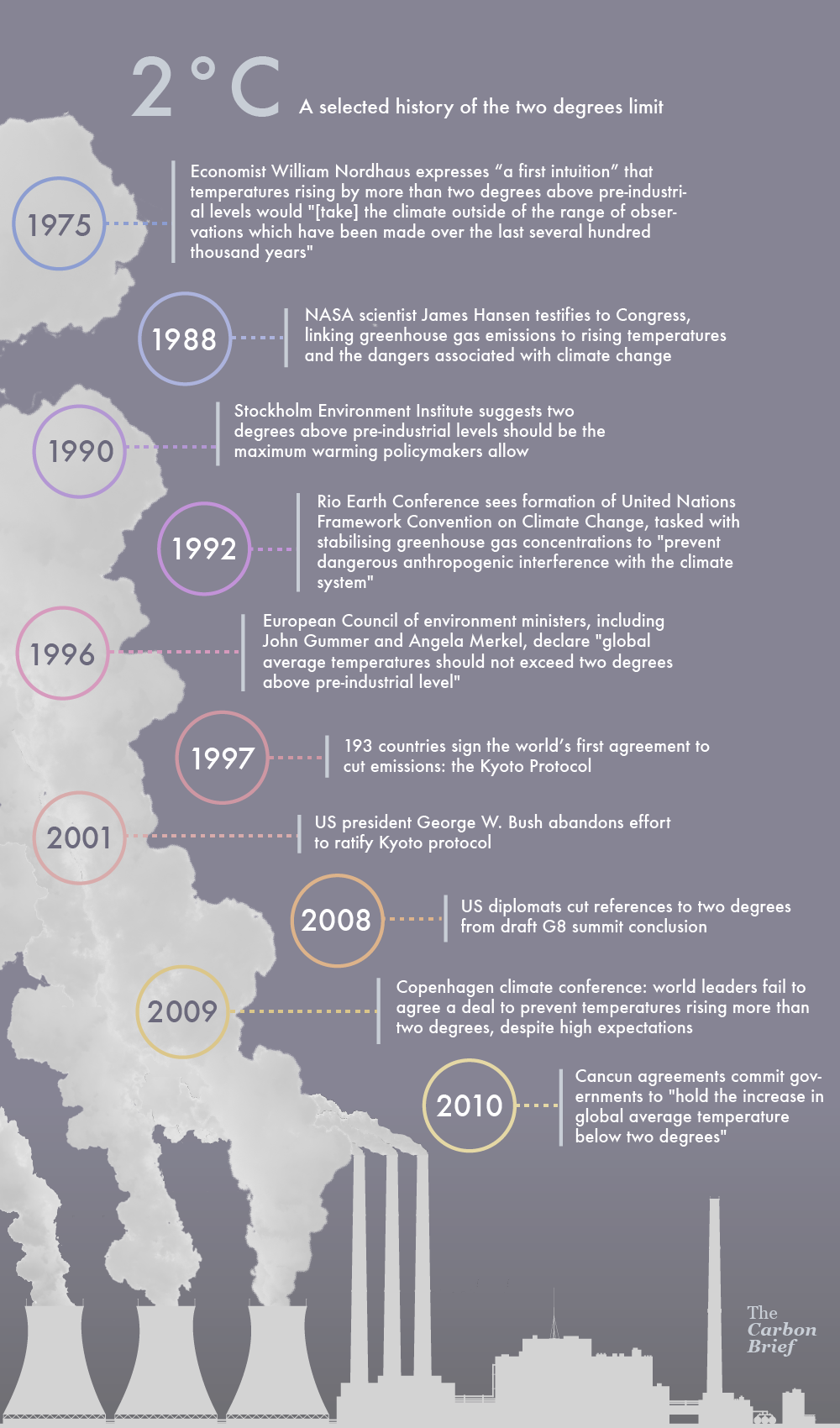Today I'm looking at extreme weather. This includes more intense and more frequent storms, extreme conditions such as El Niño and La Niña years (see my other blog for more depth), heatwaves, and other extreme events.
If we cross the 2°C of warming threshold, and indeed if we continue to see a rise in average global temperature (even if it is 1.9999°C at its peak), it is generally agreed that extreme weather events will become more frequent, and more intense. The IPCC Fifth Assessment Report explains that climate change related risks from extreme events, such as heatwaves, are already moderate with 1°C of warming and there is a high likelihood that this risk will increase as temperature does. In a specific FAQ, they go on to explain that changes in the frequency and intensity of extreme events are likely to occur, even with small mean climate changes. Here's a quick breakdown (by order of most likely):
Heatwaves:
- Increased risk of more intense, more frequent and longer-lasting heatwaves
- Likely to have a decrease in the daily range of temperatures in most regions
- Likely to have fewer frost days (temperatures below freezing), and thus longer growing seasons
- However exceptions could occur due to changes in atmospheric circulation, most likely in regions such as western North America
Christidis et al. (2014) focus on the European heat wave of 2003, where tens of thousands of people died, and the likelihood of severe heatwaves in the future. According to them, an earlier study suggested that human influence "at least doubled the chances" of the event, and forecast that severe heatwaves could become commonplace by 2040. This newer study found that extreme events that would occur twice a century in the early 2000s are now expected to occur twice a decade.
Heat wave duration index from the Warming World: Impacts By Degree booklet, based on the National Research Council report Climate Stabilization Targets: Emissions, Concentrations, and Impacts Over Decades to Millennia (2011)
Consequences of heatwaves that the IPCC deem likely are:
- Reduced agricultural yields in warmer regions due to heat stress
- Increased danger of wildfires
- Increased water demand and water quality problems
- Increased risk of heat-related mortality
- Reduction in quality of life for people in warm areas without appropriate housing
Heavy precipitation events:
- Increased chance of intense precipitation and flooding due to the greater water-holding capacity of a warmer atmosphere
- Over mid-latitude land masses, extreme precipitation events will very likely be more intense and more frequent in a warmer world
-Likely that precipitation will be concentrated into more intense events, with longer periods of little precipitation in between
- Wet extremes are projected to become more extreme, with mean precipitation expected to increase, and dry extremes are also projected to become more extreme, with mean precipitation projected to decrease
This ultimately leads to a larger disparity between extreme wet and dry areas around the world, which could heavily influence migration. However, many megacities and urban areas are low-lying and therefore vulnerable to coastal flooding due to heavy precipitation events (particularly when coupled with sea level rise).
Overall, increasing global temperatures will likely lead to an increase in the frequency of heavy precipitation events and/or an increase in the proportion of total rainfall from heavy precipitation over many areas, in particular in the high latitudes and tropical regions, and in winter in the northern mid-latitudes.
Consequences of heavy precipitation events that the IPCC deem likely are:
- Damage to crops, soil erosion and waterlogged soils that reduce ability to cultivate land
- Adverse effects on the quality of surface and groundwater, potential contamination
- Increased risk of death, injury, water-borne diseases
- Disruption of settlements, commerce and transport, damage to infrastructure due to flooding
Drought:
- Increased risk of drought globally due to changes in atmospheric circulation, with an increase in the areas affected by drought
- Increased risk of more intense, more frequent and longer-lasting droughts
- Likely lead to food insecurity, water shortages, malnutrition and other socio-economic problems
Warming World: Impacts By Degrees, which is based off the National Research Council report Climate Stabilization Targets: Emissions, Concentrations, and Impacts Over Decades to Millennia (2011), argues that an increase in global temperatures will lead to higher evaporation rates, which can further exacerbate droughts.
The Committee on Climate Change also argue that under a 2°C scenario, an estimated 1.5 billion people each year will live in areas without enough usable water. This of course it not only due to droughts, but also changes in precipitation patterns. However, increasing water stress is a very likely potential outcome of more droughts.
Consequences of droughts that the IPCC deem likely are:
- Land degradation, lower yields, crop failures
- Increased livestock deaths
- Increased risk of wildfires
- More widespread water stress
- Increased risk of food and water shortages, malnutrition, incidence of food and water-borne diseases
- Water shortages for settlements, industry, agriculture, potential for migration
- Reduced hydropower potential
Storms:
- Tropical cyclone activity is likely to be more intense
- Potential for a decrease in the number of tropical cyclones
- Likely poleward shift of storm tracks in both hemispheres
- Likely increase in heavy rainfall associated with tropical cyclones
There is evidence from modelling studies that future tropical cyclones could become more severe, with greater wind speeds and more intense precipitation. Elsner et al. (2008) found that Atlantic tropical cyclones are getting stronger on average, with a 30-year trend that has been associated to an increase in ocean temperatures over the Atlantic Ocean and elsewhere. Warming global temperatures are likely to result in more intense storms as warm sea temperatures have more energy to convert to tropical cyclone wind. Knutson et al. (2010) suggest that globally averaged intensity of tropical cyclones will increase by 2-11% by 2100, along with a projected decrease in the frequency of tropical cyclones by 6-34%. Finally, Warming World: Impacts By Degrees, claim that hurricane intensity will increase by 1-4% per 1°C of warming and that hurricane destructive power (cube of the wind speed) will increase by 3-12% per 1°C of warming. They also suggest that hurricane frequency decreases by 0-1% per 1°C of warming.
However, these studies and many other models indicate high levels of uncertainty. Some argue that this trend of more intense storms could simply be due to the increase in reporting of tropical cyclones in the past 50 years. In addition, cyclones are difficult to predict due to dependence of cyclone genesis and other phenomena that affect it, such as the El Niño Southern Oscillation (ENSO).
Consequences of storms that the IPCC deem likely are:
- Damage to crops, trees, coral reefs
- Disrupted water supply, potential for contamination
- Increased risk of death, injury, food and water-borne diseases
- Disruption of settlements, loss of property, potential for migration
There are still many uncertainties about the role of increasing global mean temperature in the incidence of extreme weather events. There are also many natural phenomena that can affect extreme weather, such as the El Niño Southern Oscillation, so it can be difficult to ascertain what the potential changes are a result of 2°C warming could be. Finally, natural phenomena can be affected by climate change (and vice versa), such as Cai et al. (2014) suggesting that there is likely to be an increase in the frequency of El Niño events due to "greenhouse warming".
Apologies that this post was not as brief as I had hoped but I'll be back with some quick looks at other impacts of warming past 2°C!











